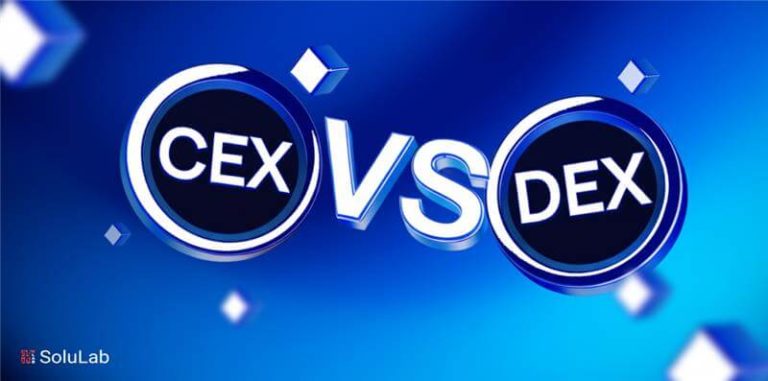
Can the machines we create outsmart us? Well, that is debatable, but today’s machines certainly can and do think for themselves, perform tasks without human intervention and even teach themselves. This branch of artificial intelligence is called machine learning. Heard this term often but don’t really know what it is all about? Well, read on to understand this increasingly popular new-age technology!
We interact with it on a daily basis without realising we’re doing it. For example, every time we read an email and get a number of automatic response options. The machine we’re using analyses the content of the email in order to determine what the suggested response should be, in the same way as it warns us with a ‘you talk of an attachment in your email, but nothing is attached; send it anyway?’ dialogue box when we write an email to our bosses but forget attaching the content that had to be sent. Everytime an unlock is attempted on machines like our smartphones or laptops, our data is protected and the user is not prioritised – until passwords, facial recognition or voice recognition comes back positive. This is a preference the machine reverses immediately as soon as you login. All of these are subtle examples of machines acting of their own accord.
The various methods employed for machines to self-learn look like this:
Trial and Error: This is a process in which a machine takes a number of routes, no matter how many attempts it takes, in order to come up with the fastest, most efficient way. This relies on self learning through analyses of time taken and rewards based on completion of tasks. The machine learns to optimise time and output and strike a balance between the two.
Supervised Learning: This happens through the use of labelled data. The description of, say, the same picture across millions of computers all over the world that the said machine has access to leads the machine to come up with the most suitable description. It happens in a similar way with respect to different industries, when industrial products are concerned.
Different descriptions help industries in optimising product quality and approachability.
Unsupervised Learning: Instead of looking for unique data and forming a larger picture, this method focuses on looking for similarities in data and divides people into groups. Division of people into groups also divides public needs into groups, and then sectors can analyse which of those needs is being met and which of them they can work on providing. These categorisations enormously help industries in looking out for opportunities that they otherwise might have missed.
AutoML- A Revolution
The biggest transformation in how organizations, pan-purposes and sizes, approach machine learning and data management is shifting from traditional to autoML.
The Need
This new approach is a need of the hour since traditional ML solutions are –
- Heavily time-consuming
- Resource-intensive, and
- Require experts in several technical disciplines like domain knowledge, advanced mathematical functions and computer science. With a greater demand than supply of data scientists, hiring and retaining one for your company is a challenge. Further, the vulnerability to human bias and error is ever present as long as processes aren’t automated.
AutoML simplifies the deployment of self-learning machines into daily applications. It is achieved by running systematic processes on raw data and selecting models that extract the most relevant information from the data. This can be seen as the elimination of noise from the signal.
With a remarkable elimination of the need for expertise, AutoML democratizes machine learning thereby opening up an avenue of possibilities for a plethora of industries and companies. Companies with limited resources at their disposal can leverage ML and AI and enjoy their benefits without heavily investing in scientists. Large companies with high resources can divert the attention and expertise of their team of scientists and engineers to other, more complex problems. The industries that autoML has impacted are healthcare, financial markets, fintech banking, public sector, marketing, retail, sports and manufacturing.
The working
Here is a diagram depicting the detailed functioning of DataRobot:

As we can see, there are nine main steps to machine learning-
- Identifying business problems and expected value
- Collect data
- Label data
- Extract features
- Split dataset
- Determine model evaluation criteria
- Train models
- Analyse model outcomes
- Deploy model
The box indicated how all steps from 4-9 can be automated, while in the traditional method, it is only step 7. If we do the math on each arrow and its characteristics, it is clear how autoML replaces weeks and months with days at most.
Hence, in a nutshell, autoML-
- Preprocesses data
- Provides feature engineering
- Generates diverse algorithms
- Selects suitable algorithms
- Trains and tunes the machine according to data requirements
- Does ensembling
- Participates in head-to-head model competitions
- Provides human-friendly insights
- Simplifies deployment
- Monitors and manages the model
AutoML Tools
Every technology needs tools to be functional. Ideal autoML tools are easy to use with a relatively low learning curve. The absence of complexity is essential to the democratization a responsible world should be aiming for.
Ten main autoML tools are given below:
1. Auto Keras
An open-source software library for autoML. It was developed by the ‘Data Lab’ at Texas A&M University and community contributors. This software library provides functions to search for the architecture and hyper-parameters of deep learning models automatically.
2. H2OAutoML
H2O is also an open-source platform, but it is also distributed and in-memory. It is a platform with linear scalability and includes a learning module. Driverless AI is H2O.ai’s flagship product and automates some of the most challenging and productive tasks in applied data science such as feature engineering, model tuning, model ensembling, and model deployment.
3. SMAC
SMAC or sequential model-based algorithm configuration is a versatile tool. It optimizes algorithm parameters and has proven to be very effective for hyper-parameter optimization, scaling to better dimensions and discrete input dimensions. These are just some examples of the many algorithms it simplifies.
4. Auto-sklearn
The supervised learning auto-sklearn provides is out-of-the-box. It is built around the scikit – learn machine learning library and automatically searches for the right algorithm for a new machine learning dataset, optimizing hyper-parameters.
5. Amazon Lex
Amazon Lex provides advanced deep learning functionalities of automatic speech recognition or ASR. It helps convert speech to text and the natural language understanding or NLU enables users to build apps with highly engaging user experiences and lifelike conversational interactions. Amazon Lex is what makes Amazon Alexa available to all the developers allowing them to build natural language, and sophisticated conversational bots quickly and easily.
Auto-WEKA considered and solved the problem of simultaneous selection of a learning algorithm and setting its hyper-parameters. It uses a fully automated approach, leverages recent innovations in Bayesian optimization or BOHB, and helps non-expert users in identifying ML algorithms more effectively. This happens alongside setting hyper-parameters appropriate to the particular applications.
7. Auto-PyTorch
Auto-PyTorch automates the right architecture and hyper-parameter settings. It uses multi-fidelity optimization alongside Bayesian optimization, or BOHB, to search for the best settings.
8.RoBO
RoBO stands for Robust Bayesian Optimisation. It is a framework written in Python. The core is a modular framework. It allows an easy exchange and addition of components of Bayesian optimization such as different acquisition functions and regression models. The different regression models contained are Gaussian processes, Random Forests and Bayesian neural networks, amongst others. Expected improvement, probability of improvement, lower confidence bound and information gain are some of the acquisition functions built.
9.AutoFolio
AutoFolio’s main purpose is to optimize the performance of algorithm selection systems. It uses algorithmic configuration. It achieves the target by determining what the best selection approach and its hyper-parameters would be.
Algorithm Selection or AS techniques have sufficiently improved the state-of-the-art in solving pressing AI concerns. They involve choosing an algorithm from a set of algorithms that would solve the given problem instance most effectively.
10. Flexfolio
Flexfolio is an open solver architecture that integrates several different techniques and approaches of portfolio-based algorithm selection. It is a modular architecture that provides a unique framework for comparing and combining existing selection systems in a single, united framework.
Conclusion
With people – including entrepreneurs and company owners – coming from diverse socio-economic backgrounds, it only makes sense that more inclusive technologies be developed and existing technologies be made more accessible. AutoML is just the way to do this. Small industries, companies with limited resources, entrepreneurs looking to experiment with technology – these are all groups that benefit from removing the need for experts. It is encouraging to see strides in this direction being taken.
However, complacency is a vice and we must remember – there’s always scope for further growth and development. We have come a long way from where we were and now, it is time to take inspiration and explore the exciting possibility of another breakthrough in science.




